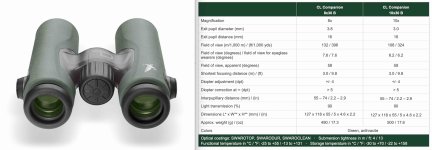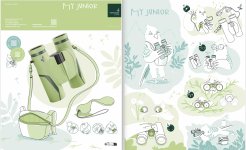That's what I thought as well.
Yep. And the datasheet for the MJ is clearly not for the consumption of kids, it's far too technical. Why should it be simplified?
The manual, however, is of course simplified. That makes sense. But have a close look at (4) on the right in John's attached photo:
This means IMO: If you want to focus on something close by, focus clockwise to the flower symbol on the left of the dial. And if you want to look at something far away, focus anti-clockwise to the mountain symbol on the right. Check the third photo in post #3, it clearly shows the symbols.
A few thoughts:
- Children have got a far broader accomodation range than adults. Most (but most probably not all) children with different acuity in their eyes should be able to use the MJ even if they don't wear glasses or contacts.
At the same time Swarovski made sure many adults won't be able to use the MJ. Many adults, especially older adults, need to change the dioptre adjustment from time to time. For instance, when I'm tired or stressed I need to change the dioptre adjustment by ~0.5 dioptres even when I'm wearing glasses. So, even if an adult can cope with the colours of the MJ, it may not really work for them.
But then adults are probably supposed to spend
Hermann











